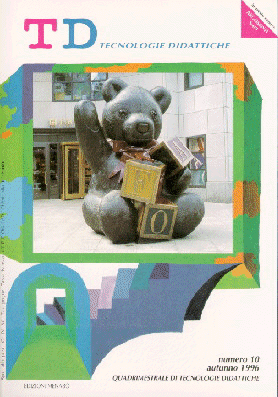Networked teaching and learning: teaching by correspondence in the XXI century?
Main Article Content
Abstract
Comparison of training in the network, and other teaching methods. The pros and cons of this new approach and the characteristics of professional tutor network.
Article Details
Section
Articles - Special Issue

This work is licensed under a Creative Commons Attribution-NonCommercial 4.0 International License.
Authors who publish with this journal agree to the following terms:
- Authors retain copyright and grant the journal right of first publication with the work simultaneously licensed under a Creative Commons Attribution-NonCommercial 4.0 International License.
- Authors are able to enter into separate, additional contractual arrangements for the non-exclusive distribution of the journal's published version of the work (e.g., post it to an institutional repository or publish it in a book), with an acknowledgement of its initial publication in this journal.
- Authors are permitted and encouraged to post their work online (e.g., in institutional repositories or on their website) prior to and during the submission process, as it can lead to productive exchanges, as well as earlier and greater citation of published work (See The Effect of Open Access)
References
Boot R., Hodgson V. (1988), Open Learning: philosophy or expediency?, Programmed Learning and Educational Technology, 25 3.
Davie L., (1992), Facilitation Techniques for the Online Tutor in Kaye A. R. (ed), Collaborative Learning Through Computer Conferencing, SpringerVerlag, Berlin.
Feenberg A. (1989), The Written World in Mason R. D. and Kaye A. R. (Eds), Mindweave Communication, Computers and Distance Education, Pergamon, Oxford.
Harasim L. (1989), Online Education: a new domain in Mason R. D. and Kaye A. R. (eds), Mindweave Communication, Computers and Distance Education, Pergamon, Oxford.
Kaye A. R. (1992), Collaborative Learning Through Computer Conferencing, Springer-Verlag, Berlin.
Mason R. D., Kaye A. R. (1989), Mindweave Communication, Computers and Distance Education, Pergamon, Oxford.
Mc Connell D. (1992), Computer Mediated Communication for Management Learning in Kaye A R (ed), Collaborative Learning through Computer Conferencing, SpringerVerlag, Berlin.
Rowntree D. (1985), Developing Courses for Students, Paul Chapman, London.
Soby M. (1992), Waiting for Electropolis in Kaye A R (ed), Collaborative Learning through Computer Conferencing, SpringerVerlag, Berlin.
TLO (1994), Teaching and Learning Online, a 3-month online course for teachers and trainers run twice a year by the Institute of Educational Technology, in the Open University.
Wegerif R. (1995), Collaborative Learning on TLO 94: creating an online community (CITE report number 212, Institute of Educational Technology, Open University, Milton Keynes).
Davie L., (1992), Facilitation Techniques for the Online Tutor in Kaye A. R. (ed), Collaborative Learning Through Computer Conferencing, SpringerVerlag, Berlin.
Feenberg A. (1989), The Written World in Mason R. D. and Kaye A. R. (Eds), Mindweave Communication, Computers and Distance Education, Pergamon, Oxford.
Harasim L. (1989), Online Education: a new domain in Mason R. D. and Kaye A. R. (eds), Mindweave Communication, Computers and Distance Education, Pergamon, Oxford.
Kaye A. R. (1992), Collaborative Learning Through Computer Conferencing, Springer-Verlag, Berlin.
Mason R. D., Kaye A. R. (1989), Mindweave Communication, Computers and Distance Education, Pergamon, Oxford.
Mc Connell D. (1992), Computer Mediated Communication for Management Learning in Kaye A R (ed), Collaborative Learning through Computer Conferencing, SpringerVerlag, Berlin.
Rowntree D. (1985), Developing Courses for Students, Paul Chapman, London.
Soby M. (1992), Waiting for Electropolis in Kaye A R (ed), Collaborative Learning through Computer Conferencing, SpringerVerlag, Berlin.
TLO (1994), Teaching and Learning Online, a 3-month online course for teachers and trainers run twice a year by the Institute of Educational Technology, in the Open University.
Wegerif R. (1995), Collaborative Learning on TLO 94: creating an online community (CITE report number 212, Institute of Educational Technology, Open University, Milton Keynes).

